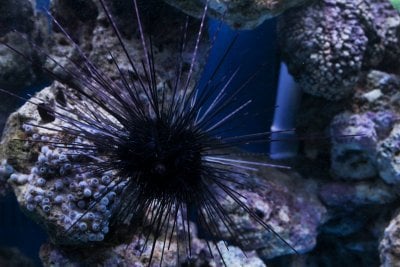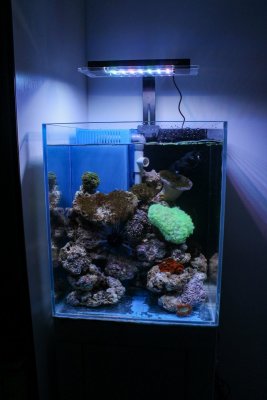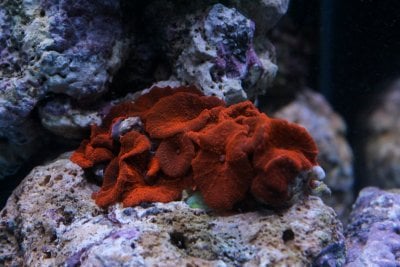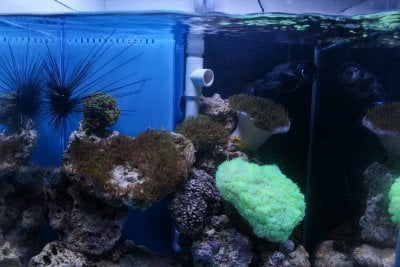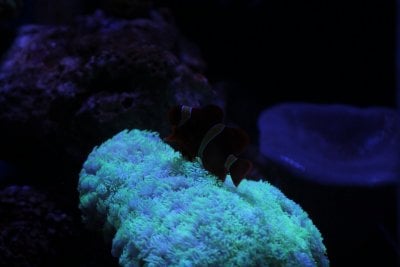Chinese Aquarium Markets—Chinese Aquarium Culture & Design—My Nano Reef—Chinese brands that aren’t half bad—Live rock—Youtube Channel
Chinese aquarium markets have the vibe of a silk road bazaar. You rarely see what you and I call fish stores. Instead, you see rows of vendors in underground alleys, each specializing in a specific species or equipment set. Men selling aquascaping rock, women holding up lengths of Malaysian driftwood. You’ve got your discus guys, your cichlid hawkers, and then those who deal in Asian Arowana—the last dragons in China.
My girlfriend—Shelly—lives with me in Shenzhen, and she insisted on coming to Honghu Aquarium market. She worried I wouldn’t say “有点贵” forcefully enough. (Translation: “it’s too expensive.” A phrase you must repeat constantly when haggling in China.) I speak Chinese at the level of a semi-intelligent six-year-old. So I was happy to let Shelly do the talking. She has a passion for bargaining, even on things with set prices—like restaurant menus. I once heard her negotiating the price of noodles.
Our fishkeeping brethren in China build their tanks upside down. They put the sump on top of the aquarium instead of beneath it. Generally, this sump covers the full length of the hood and doubles as a lid. Many Chinese fish keepers I know live in fear their fish will jump. That heavy sump gives them peace of mind. If a Super Red jumps, that’s a lot of money flopping on the floor.

However, many Chinese aquarists lean toward the opposite extreme. They leave their tanks uncovered out of superstition—the fish might need to send them a message one day.
Every fish seller in China tells the story of the Malaysian businessman and his Asian arowana. In the story, the man and his fish share a special bond. One day, a business associate invited him to make a risky investment. The day before closing the deal, the arowana jumped out and died on the floor. He believed the fish killed itself to prevent the deal. A few months later the company he’d considered investing in folded. This story has many variations—sometimes the man is Japanese, sometimes it’s a Super Red, but the moral remains the same. The fish saved the man’s business.
Here, anything red demands a higher price. Pigeon blood discus, chili reds, red mushroom coral, even arapaima with especially vibrant tails. The color is embedded in China’s cultural psyche. During Spring Festival, people exchange red packets of money and hang red paper cuttings on their doorways. In traditional weddings, Chinese brides don’t wear white, they wear red.
When I first moved to China four years ago, I bought an upside-down aquarium. For freshwater, these are better than any Western-style aquarium. The pump pulls water from the bottom, zips it to the mini-sump, and then it flows back in. A clean and efficient system, perfect for a bare bottom tank. However, I wanted to keep coral this time and needed a Western-style setup.
Shelly finagled, bargained, and then feigned a walkaway. By the end of it, the vendor offered us a 100-liter system for 800 yuan. (About $125 USD.) It included the tank, light, stand, sump, and pump. I would've preferred a larger aquarium, but I have limited space. Shelly and I live in a studio. Additionally, I prefer glass aquariums. Call me old fashioned, but glass just feels better. But we have to carry it to the fifth floor (no elevator), so I decided acrylic was more pragmatic. I paid while Shelly told the vendor we’d pick it up next week.
Later that evening, while ambling Shenzhen’s alleyways, I stumbled into one of those rare standalone fish stores. Except for the labels written in Chinese and the Buddhist shrine in the corner, it reminded me of an American LFS. The owner—who I call Mr. Li—welcomed me into his shop. He soon offered me a great deal on a used 100-liter cube. 300 yuan—about $45—for the tank, stand, sump, and pump. When I heard the price, I wanted it. But I'd already promised my money to another. I thanked Mr. Li and left his store.
I tried to forget the cube. It was heavy, impractical, and didn’t come with a light. But it was glass, high-quality, and perfect for a nano reef. Shelly messaged the vendor in Honghu to request a refund. When they returned my money, I went straight to Mr. Li to purchase the cube. That trip became the subject of my first video.

Afterward, I collected all the bits and bobs needed for the setup. Mr. Li ordered the light—a Chinese brand called Sunpolar. It’s a fine piece of equipment with this quirky thing called “lighting mode." Hit that button and it flashes like a strobe light. I ordered the rest of my gear off Taobao, China’s equivalent to Amazon. I ordered a Sunsun powerhead, an Aquasyncro protein skimmer, and a heater. I'm unsure what brand —it's in Chinese. People hate on Chinese made stuff, but everything I bought, especially the protein skimmer, was top notch. It fits perfectly in my five-gallon sump. As for the powerhead, you get a lot of flow for $3. When was the last time you got a powerhead that cheap?

After filling it, I visited Mr. Li to buy live rock. (I had installed a RO/DI filter under my sink and used a Chinese brand of reef salt.) Mr. Li sold cured rock for about $1.25 a pound. I purchased ten kilos in total. When I told Shelly how much I paid, she said, “just for rocks?”
To me, an aquarium—especially a reef tank—signifies stability. After a few messy years, I finally feel ready to put down a tank. Also, I want to be involved with the fish keeping community. So I joined here, Fishlore, and Reddit. I also made a youtube channel as a creative outlet. I’m playing the youtube game, I’ve got my gimmick to make the videos fun. (I’m going to train fish.) But what I’m writing here is the soul behind my aquarium.
Joining the message boards has been humbling. When you practice your hobby in a bubble, you assume you’re an expert. However, I quickly realized I was a novice when I attempted discussing theology with the monks. I’ve adjusted my posture and opened myself up to instruction. After just one week on R2R, I’ve learned a lot.
Thank you for letting me be part of your community.
Nathan Smith
My Youtube Channel- How to Train Your Fish
P.S. Shelly enjoys our little aquarium. And she only complained a little when we carried it up the stairs.

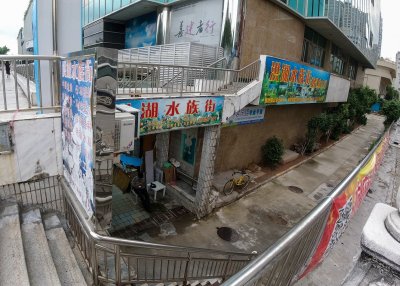
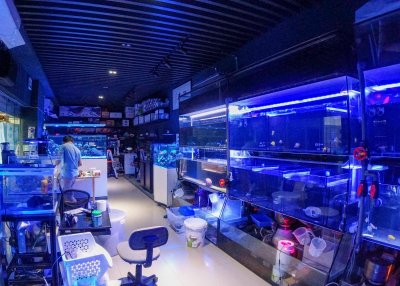
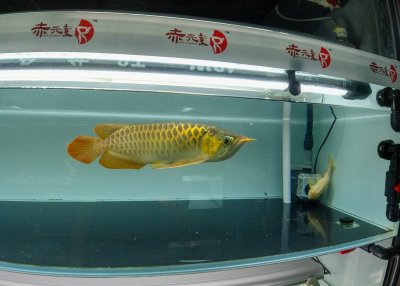
Chinese aquarium markets have the vibe of a silk road bazaar. You rarely see what you and I call fish stores. Instead, you see rows of vendors in underground alleys, each specializing in a specific species or equipment set. Men selling aquascaping rock, women holding up lengths of Malaysian driftwood. You’ve got your discus guys, your cichlid hawkers, and then those who deal in Asian Arowana—the last dragons in China.
My girlfriend—Shelly—lives with me in Shenzhen, and she insisted on coming to Honghu Aquarium market. She worried I wouldn’t say “有点贵” forcefully enough. (Translation: “it’s too expensive.” A phrase you must repeat constantly when haggling in China.) I speak Chinese at the level of a semi-intelligent six-year-old. So I was happy to let Shelly do the talking. She has a passion for bargaining, even on things with set prices—like restaurant menus. I once heard her negotiating the price of noodles.
Our fishkeeping brethren in China build their tanks upside down. They put the sump on top of the aquarium instead of beneath it. Generally, this sump covers the full length of the hood and doubles as a lid. Many Chinese fish keepers I know live in fear their fish will jump. That heavy sump gives them peace of mind. If a Super Red jumps, that’s a lot of money flopping on the floor.
However, many Chinese aquarists lean toward the opposite extreme. They leave their tanks uncovered out of superstition—the fish might need to send them a message one day.
Every fish seller in China tells the story of the Malaysian businessman and his Asian arowana. In the story, the man and his fish share a special bond. One day, a business associate invited him to make a risky investment. The day before closing the deal, the arowana jumped out and died on the floor. He believed the fish killed itself to prevent the deal. A few months later the company he’d considered investing in folded. This story has many variations—sometimes the man is Japanese, sometimes it’s a Super Red, but the moral remains the same. The fish saved the man’s business.
Here, anything red demands a higher price. Pigeon blood discus, chili reds, red mushroom coral, even arapaima with especially vibrant tails. The color is embedded in China’s cultural psyche. During Spring Festival, people exchange red packets of money and hang red paper cuttings on their doorways. In traditional weddings, Chinese brides don’t wear white, they wear red.
When I first moved to China four years ago, I bought an upside-down aquarium. For freshwater, these are better than any Western-style aquarium. The pump pulls water from the bottom, zips it to the mini-sump, and then it flows back in. A clean and efficient system, perfect for a bare bottom tank. However, I wanted to keep coral this time and needed a Western-style setup.
Shelly finagled, bargained, and then feigned a walkaway. By the end of it, the vendor offered us a 100-liter system for 800 yuan. (About $125 USD.) It included the tank, light, stand, sump, and pump. I would've preferred a larger aquarium, but I have limited space. Shelly and I live in a studio. Additionally, I prefer glass aquariums. Call me old fashioned, but glass just feels better. But we have to carry it to the fifth floor (no elevator), so I decided acrylic was more pragmatic. I paid while Shelly told the vendor we’d pick it up next week.
Later that evening, while ambling Shenzhen’s alleyways, I stumbled into one of those rare standalone fish stores. Except for the labels written in Chinese and the Buddhist shrine in the corner, it reminded me of an American LFS. The owner—who I call Mr. Li—welcomed me into his shop. He soon offered me a great deal on a used 100-liter cube. 300 yuan—about $45—for the tank, stand, sump, and pump. When I heard the price, I wanted it. But I'd already promised my money to another. I thanked Mr. Li and left his store.
I tried to forget the cube. It was heavy, impractical, and didn’t come with a light. But it was glass, high-quality, and perfect for a nano reef. Shelly messaged the vendor in Honghu to request a refund. When they returned my money, I went straight to Mr. Li to purchase the cube. That trip became the subject of my first video.
Afterward, I collected all the bits and bobs needed for the setup. Mr. Li ordered the light—a Chinese brand called Sunpolar. It’s a fine piece of equipment with this quirky thing called “lighting mode." Hit that button and it flashes like a strobe light. I ordered the rest of my gear off Taobao, China’s equivalent to Amazon. I ordered a Sunsun powerhead, an Aquasyncro protein skimmer, and a heater. I'm unsure what brand —it's in Chinese. People hate on Chinese made stuff, but everything I bought, especially the protein skimmer, was top notch. It fits perfectly in my five-gallon sump. As for the powerhead, you get a lot of flow for $3. When was the last time you got a powerhead that cheap?
After filling it, I visited Mr. Li to buy live rock. (I had installed a RO/DI filter under my sink and used a Chinese brand of reef salt.) Mr. Li sold cured rock for about $1.25 a pound. I purchased ten kilos in total. When I told Shelly how much I paid, she said, “just for rocks?”
To me, an aquarium—especially a reef tank—signifies stability. After a few messy years, I finally feel ready to put down a tank. Also, I want to be involved with the fish keeping community. So I joined here, Fishlore, and Reddit. I also made a youtube channel as a creative outlet. I’m playing the youtube game, I’ve got my gimmick to make the videos fun. (I’m going to train fish.) But what I’m writing here is the soul behind my aquarium.
Joining the message boards has been humbling. When you practice your hobby in a bubble, you assume you’re an expert. However, I quickly realized I was a novice when I attempted discussing theology with the monks. I’ve adjusted my posture and opened myself up to instruction. After just one week on R2R, I’ve learned a lot.
Thank you for letting me be part of your community.
Nathan Smith
My Youtube Channel- How to Train Your Fish
P.S. Shelly enjoys our little aquarium. And she only complained a little when we carried it up the stairs.












